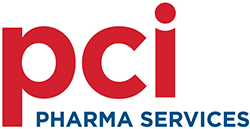The world pharmaceutical packaging market will be worth US$78.79bn by 2018, according to MarketsandMarkets.1 Dominated by North America, Europe and Japan, which accounted for more than 70% of the overall market in 2012, the sector is seeing growing demand from the Asia Pacific region. This is due to increased wealth, ageing populations and the growth of pharmaceutical contract manufacturing in the region.
Across the globe, the sector faces major changes, partly driven by changing lifestyles, with increasing use of smart phones and the Internet, but more so by legislation. Packaging concepts driven by smart phone technology are being developed to assist in patient convenience and compliance as well as authenticity.
As the technology develops, future packaging will be used more interactively by product providers and consumers. One typical such development is the Touchcode concept by packaging developer Edelmann. Invisibly applied in a printed image, this element transforms folding cartons, vial cards and leaflets into interactive media. Through the touch of a smartphone or tablet, the Touchcode brings digital content directly onto the display. Contact-free data transmission using near-field communication is possible using a label integrated into the folding carton. The use of digital interactive technology could allow companies to increase customer dialogue and to collect data.


